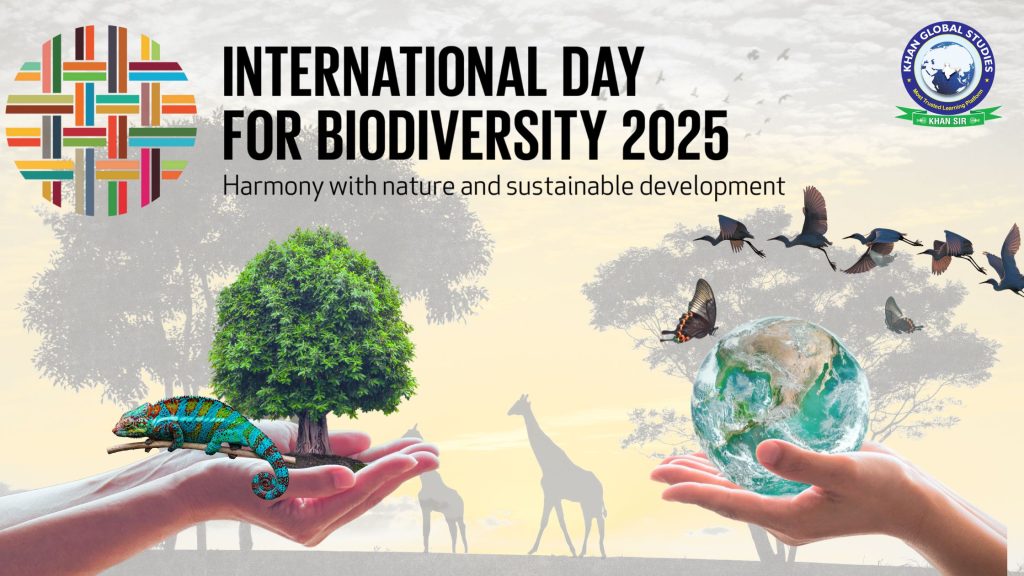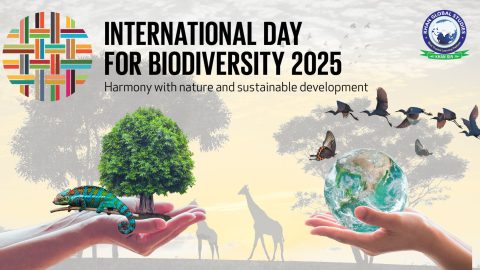The International Day for Biological Diversity is observed every year on May 22. This important day serves to raise awareness about the need to protect and preserve the rich variety of life forms on Earth — including animals, plants, microorganisms, and ecosystems. Biodiversity is the foundation of life, providing essential resources like food, medicine, clean water, and climate regulation that are crucial for human survival.
History of the Day
- The United Nations General Assembly implemented the Convention on Biological Diversity (CBD) in 1993.
- Initially, the day was celebrated on December 29, the date on which the Convention came into force.
- However, in 2000, the date was changed to May 22, to mark the adoption of the Convention on Biological Diversity in 1992 in Nairobi, Kenya.
Theme for 2025
The theme for International Day for Biological Diversity 2025 is:
“Harmony with Nature and Sustainable Development”
This theme emphasizes not only the need to conserve biodiversity but also its integral role in achieving the Sustainable Development Goals (SDGs). It highlights the importance of the Kunming-Montreal Global Biodiversity Framework (KMGBF) and supports global efforts to ensure a balanced coexistence between humanity and nature.
What is Biodiversity?
Biodiversity refers to the variety of all living organisms on Earth, including microorganisms, plants, animals, and humans, and the ecological relationships among them. It exists at three primary levels:
- Species Diversity – Variety among different species
- Genetic Diversity – Variations within the same species
- Ecosystem Diversity – Variety of ecosystems such as forests, oceans, wetlands, and deserts
Threats to Biodiversity
Biodiversity is under serious threat due to human activities and environmental changes. Major causes include:
- Deforestation
- Pollution (air, water, and soil)
- Climate change
- Overhunting and overfishing
- Habitat destruction
- Urbanization and unsustainable tourism
According to a UN report, nearly one million species are currently at risk of extinction.
Measures for Biodiversity Conservation
- Promoting afforestation and reforestation
- Supporting organic and sustainable agriculture
- Encouraging recycling and responsible waste management
- Conducting awareness and education campaigns
- Establishing protected areas such as wildlife sanctuaries and national parks
- Integrating environmental education in schools and universities
- Preserving indigenous species and traditional ecological knowledge
International Efforts
Several global frameworks and initiatives have been launched to protect biodiversity:
- Convention on Biological Diversity (CBD)
- Aichi Biodiversity Targets (2010–2020)
- Post-2020 Global Biodiversity Framework
- UN Decade on Ecosystem Restoration (2021–2030)
- These efforts aim to reverse biodiversity loss and promote sustainability at a global scale.
Biodiversity in India
India is one of the world’s megadiverse countries, rich in flora and fauna. The country is home to:
- Nearly 47,000 plant species
- Over 90,000 animal species
- Numerous national parks and wildlife sanctuaries including Jim Corbett, Kaziranga, and Sundarbans
- Major Government Initiatives in India:
- National Biodiversity Action Plan
- Wildlife Protection Act, 1972
- Project Tiger, Project Elephant, and other conservation programs
Conclusion
The International Day for Biological Diversity serves as a powerful reminder that every form of life on Earth is interconnected. Protecting biodiversity is not just an environmental issue but a necessity for human survival and well-being. It is our collective responsibility to conserve nature and ensure a healthy, sustainable planet for future generations.
“Protect Biodiversity – Protect Life”





